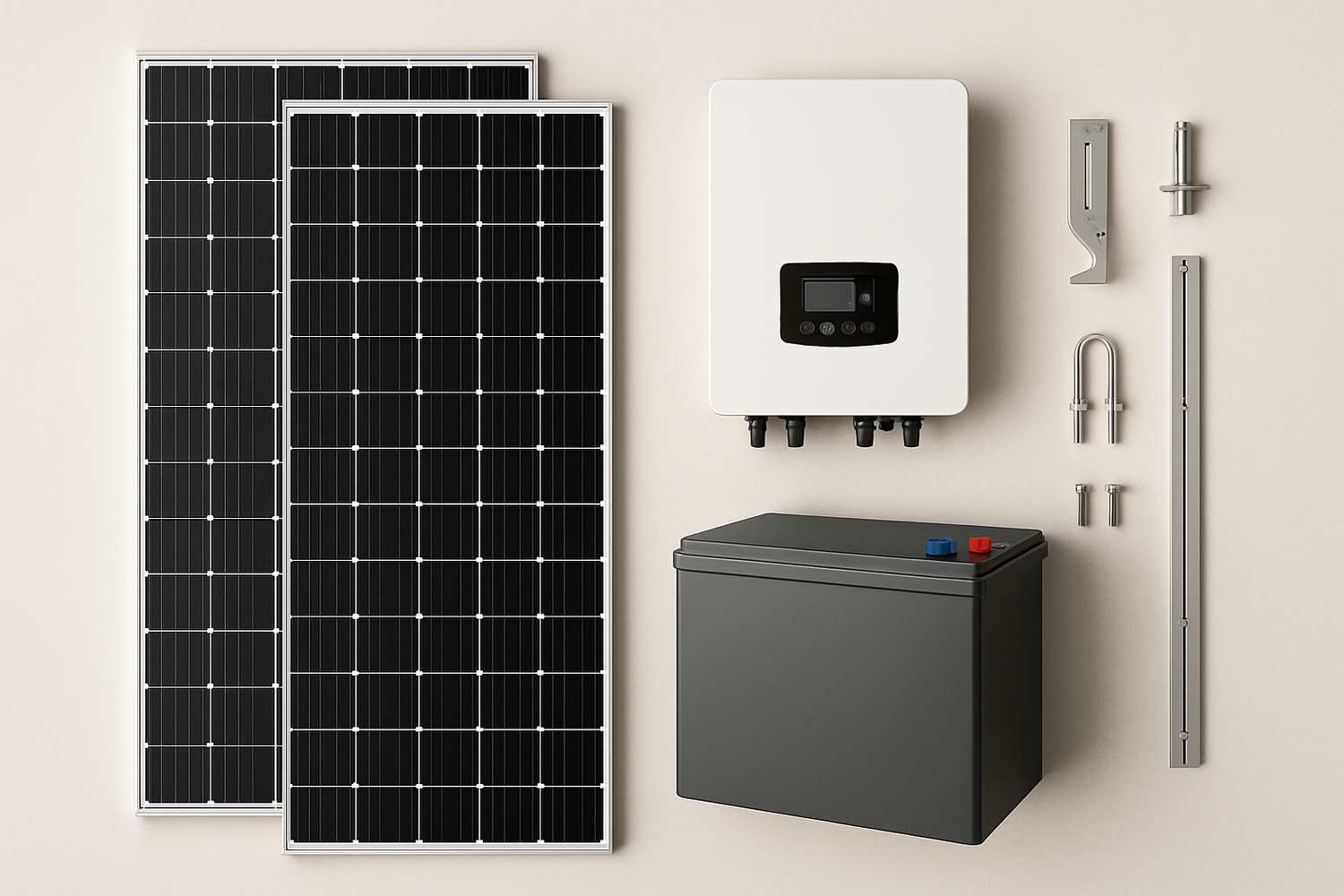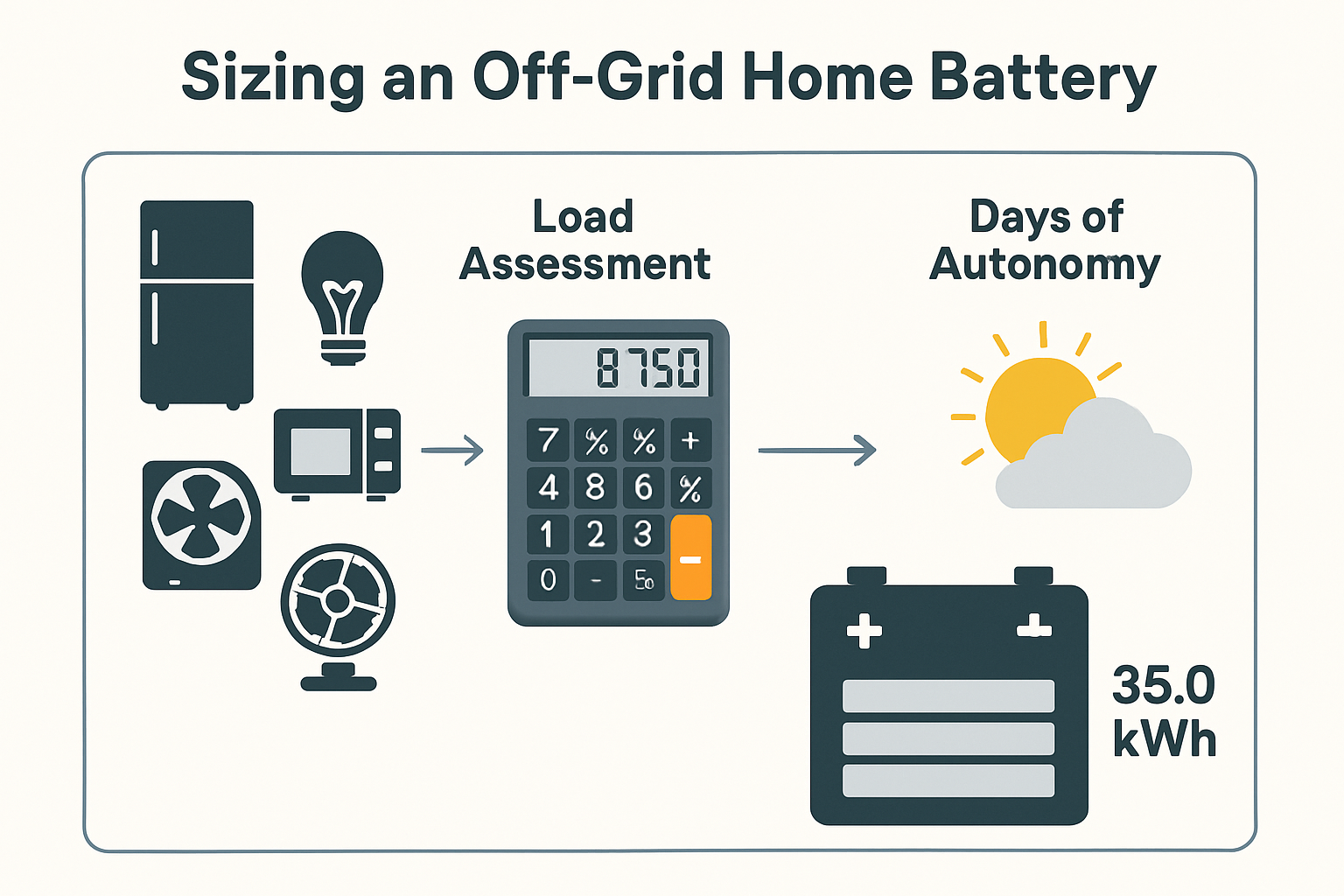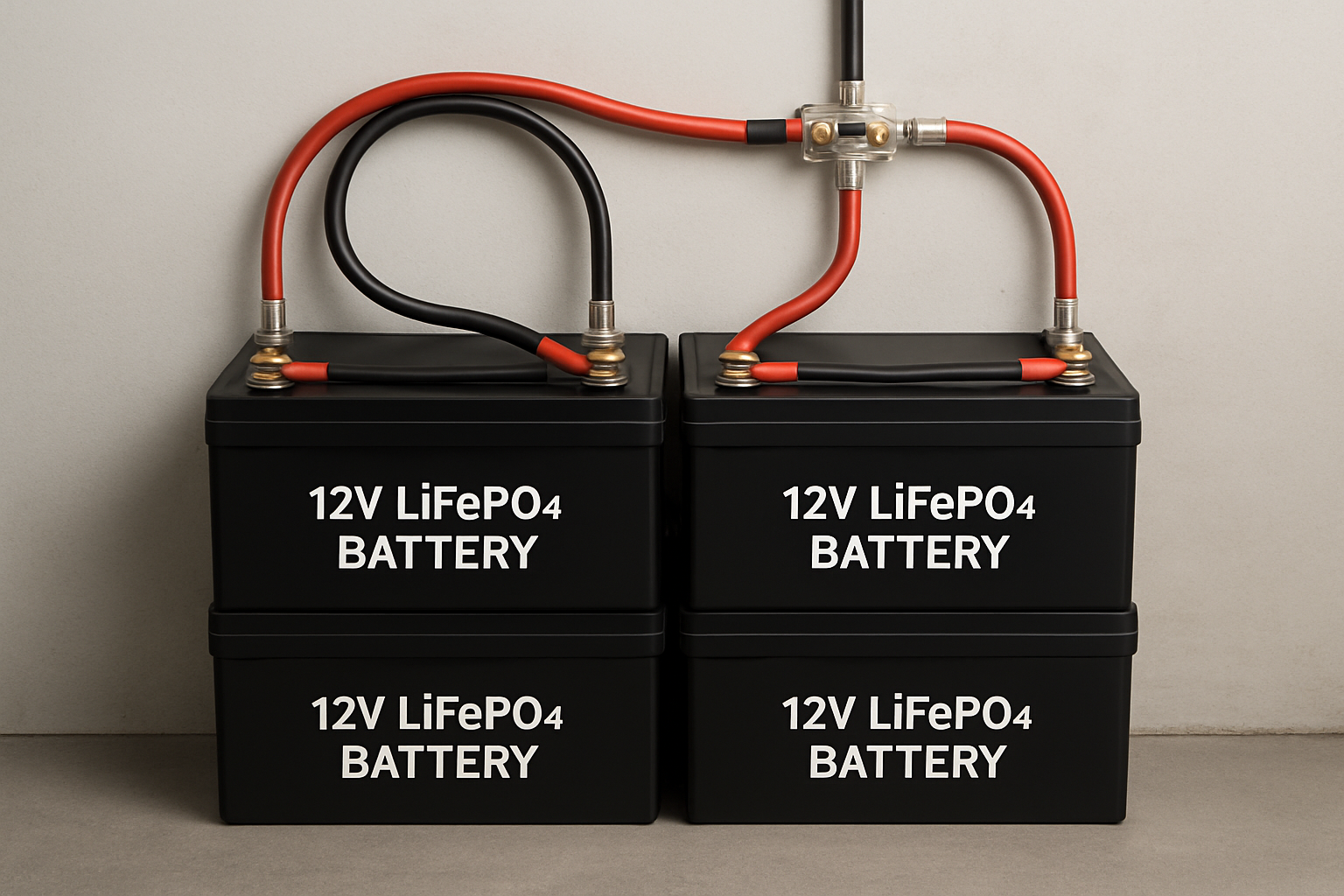Moving away from the conventional power grid offers control over your energy supply and stability in a world of fluctuating utility costs. An off-grid solar system is a robust pathway to achieving this self-sufficiency. This guide provides a clear roadmap for your solar installation, covering foundational planning, component selection, and safe setup. You will gain the knowledge to build a reliable power system tailored to your specific needs, putting you in charge of your energy future.
Foundational Planning for Your Off-Grid System
Success in any solar installation begins long before you touch a single panel. Careful planning ensures your system meets your energy demands efficiently and safely. This initial phase involves a detailed assessment of your consumption habits and your property's solar potential.
Calculating Your Energy Needs: The Energy Audit
The first step is to perform a comprehensive energy audit. This process involves listing every electrical appliance you intend to power, its wattage, and the number of hours you use it daily. This calculation gives you a total daily energy consumption figure in watt-hours (Wh). For example, a 10W light bulb running for 5 hours uses 50 Wh. Summing the watt-hours for all devices provides a baseline for sizing your entire system. Accuracy here is critical; underestimating your needs can lead to power shortages, while overestimating results in unnecessary costs.
Site Assessment and Solar Potential
Your property's access to sunlight, or solar irradiance, directly impacts energy production. A thorough site assessment is necessary. For properties in the Northern Hemisphere, a south-facing roof or ground area free from shadows is ideal. Obstructions like trees, buildings, or chimneys can cast shadows that significantly reduce panel output. Use a sun path chart or a solar assessment app to map potential shading throughout the day and across different seasons. The available, unshaded space will determine the maximum size of the solar array you can install.
Selecting the Core Components for Reliability
An off-grid solar system is composed of several key components working in harmony. Choosing high-quality, correctly sized equipment is fundamental to building a durable and efficient power source. Each part plays a distinct role in converting sunlight into usable electricity for your home, cabin, or farm.
Solar Panels: The Heart of Your System
Solar panels capture sunlight and convert it into direct current (DC) electricity. Monocrystalline panels are a popular choice for off-grid systems due to their higher efficiency ratings, which translates to more power generation in a smaller footprint. To determine the size of your solar array, you divide your daily watt-hour needs by the number of peak sun hours your location receives per day. According to the International Energy Agency (IEA), solar PV is a central pillar in the transition to cleaner energy, with technology costs having fallen dramatically over the past decade, making it more accessible than ever.
The Energy Reservoir: Choosing Your Battery Storage
The battery bank stores the energy your panels produce for use at night or on cloudy days. Lithium Iron Phosphate (LiFePO4) batteries have become the standard for serious off-grid applications. They offer a high depth of discharge (DoD), meaning you can use more of their stored capacity without damaging them. They also provide a long cycle life, often lasting over a decade with thousands of charge-discharge cycles. Sizing your battery bank requires calculating your daily energy needs and deciding on your desired 'days of autonomy'—the number of days the system can run without any solar input. For a deeper analysis of how different factors influence battery output, consulting a guide on solar storage performance provides valuable data-driven insights. This ensures your energy storage is robust enough for your lifestyle.
The Brains of the Operation: Inverters and Charge Controllers
The solar inverter is responsible for converting the DC electricity from your panels and batteries into alternating current (AC) electricity that powers standard household appliances. A pure sine wave inverter is recommended as it produces a clean, stable electrical signal suitable for sensitive electronics like computers and modern appliances. The charge controller regulates the flow of electricity from the solar panels to the battery, preventing overcharging and extending battery life. An MPPT (Maximum Power Point Tracking) charge controller is more efficient than older PWM models, harvesting more energy from your panels, especially in cooler weather or low-light conditions.
The Installation Process: A Phased Approach
A methodical and safe installation is crucial for the performance and longevity of your off-grid solar system. This process involves mounting the hardware, wiring the components together, and implementing safety measures to protect both you and your equipment.
Mounting and Wiring the Solar Array
Solar panels can be installed on a roof or on a ground-mounted rack. The choice depends on your site assessment and available space. Ensure the mounting structure is secure and can withstand local weather conditions like high winds and snow loads. When wiring the panels, you can connect them in series (to increase voltage) or in parallel (to increase amperage). The configuration you choose must be compatible with the specifications of your charge controller and inverter.
Integrating the Powerhouse: Battery and Inverter Setup
Your batteries and inverter should be housed in a clean, dry, and well-ventilated space, away from living areas. Proper ventilation is important for cooling and safety. The components should be connected in a specific order: connect the charge controller to the battery bank first, then connect the solar array to the charge controller. Finally, connect the inverter to the battery. This sequence helps the charge controller correctly identify the system voltage. Always use appropriately sized wires and install fuses or circuit breakers at key points for overcurrent protection.
System Grounding and Safety Protocols
Proper grounding is a non-negotiable safety requirement. It protects your system from lightning strikes and electrical faults, preventing equipment damage and potential fire or shock hazards. As noted by the U.S. Department of Energy, grounding provides a safe path for fault currents to dissipate. Your entire system, including panel frames, mounts, and all electrical equipment, must be grounded according to national and local electrical codes. If you are unfamiliar with these requirements, consulting a licensed electrician is highly recommended.
Living with Your System: Operation and Maintenance
Once your system is operational, ongoing monitoring and routine maintenance will ensure it performs optimally for years to come. Modern solar components are designed for durability, but a small amount of upkeep goes a long way.
Monitoring System Performance
Most modern inverters and charge controllers come with digital displays or connectivity features that allow you to monitor performance. Key metrics to watch include the battery's state of charge (SoC), daily energy production from your panels, and your current load consumption. Regularly checking these figures helps you understand your energy patterns and spot any potential issues before they become serious problems.
Routine Maintenance for Longevity
Maintaining an off-grid solar system is straightforward. Periodically clean your solar panels to remove dust, dirt, or snow, as buildup can reduce their efficiency. Check all electrical connections to ensure they remain tight and free of corrosion. One of the significant advantages of using LiFePO4 batteries is that they are virtually maintenance-free, unlike traditional lead-acid batteries that require regular fluid level checks.
Final Thoughts on True Energy Independence
Building an off-grid solar system is a significant step toward achieving energy independence. It grants you control over your power supply, offers protection from grid outages, and can reduce your environmental footprint. The process, from a detailed energy audit and careful component selection to a safe installation and diligent maintenance, empowers you with a reliable and sustainable energy source. With a well-designed system, you can enjoy the peace of mind that comes with self-sufficient power for decades.
Disclaimer: The information provided in this article is for educational purposes only. It is not intended as professional electrical, legal, or financial advice. A DIY solar setup involves significant electrical risks. Please consult with qualified professionals and adhere to all local codes and regulations.
Frequently Asked Questions
How many solar panels are needed to power a house off-grid?
The number of panels depends entirely on your energy consumption, your location's peak sun hours, and the wattage of the panels. A thorough energy audit is the first and most important step to determine your specific needs. There is no one-size-fits-all answer.
What is the lifespan of an off-grid solar system?
High-quality solar panels often have a performance warranty of 25 years or more. The system's overall lifespan is typically determined by the battery. LiFePO4 batteries can last for 10 to 15 years and deliver thousands of cycles, while traditional lead-acid batteries may need replacement every 3 to 5 years.
Can I install an off-grid solar system myself?
A DIY solar setup is achievable for individuals with strong electrical knowledge and practical skills. However, safety is paramount. Always follow manufacturer instructions, adhere to local electrical codes, and consider consulting a licensed electrician, especially for any connections to your home's main electrical panel.





Leave a comment
All comments are moderated before being published.
This site is protected by hCaptcha and the hCaptcha Privacy Policy and Terms of Service apply.